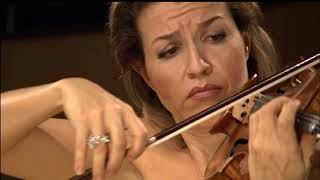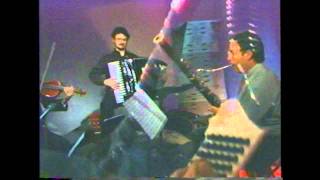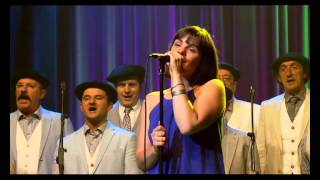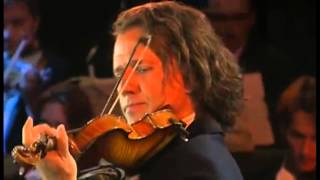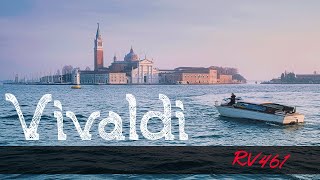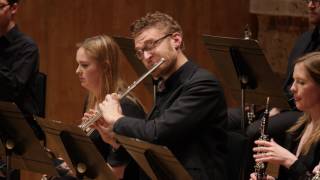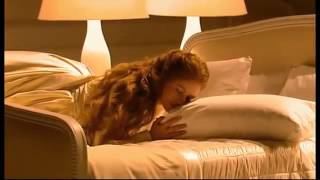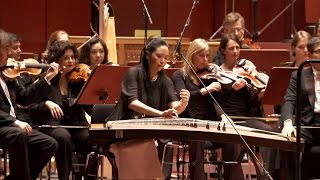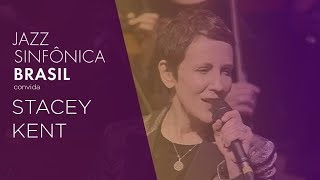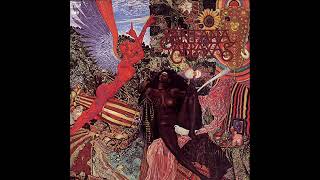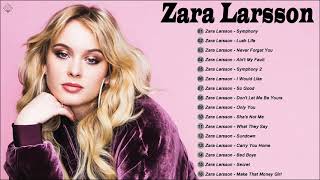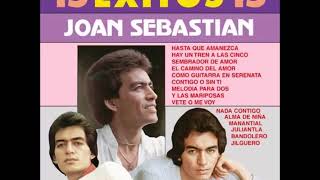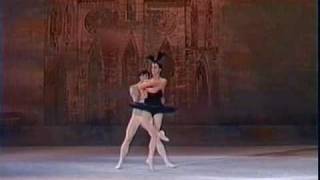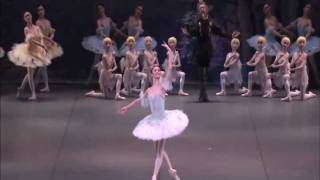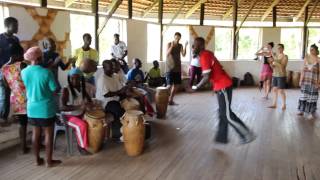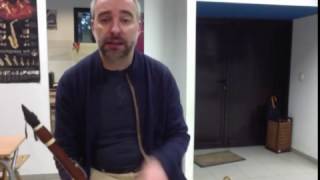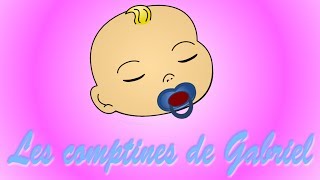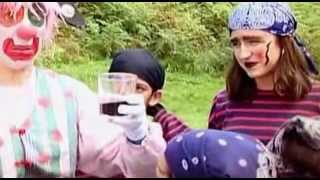Recommended music videos for initiation to classical music
Wolfgang Amadeus Mozart (1756-1791) is considered one of the three giants of musical composition along with Bach and Beethoven . Child prodigy born in Salzburg (Austria), at the age of six he mastered the keyboard and violin and began to compose. His father, Leopold, exhibited him on exhausting tours of different European courts. Prolific composer (more than 600 works written from the time he was five years old until his death) he cultivated all types of musical genres: piano works, chamber music, symphonies, concert works, choral works, operas... each and every one of them, masterpieces of its gender. His operas The Magic Flute, Don Giovanni, Cosí fan Tutte, and The Marriage of Figaro are among the 10 most performed operas in the world. He died in Vienna at the age of 35.
The Sonata was originally a composition written to be played or "sounded" by one or more musical instruments, as the cantata was to be "sung" by one or more voices. Beginning with classicism (1750-1810), its definition adjusts to a work generally articulated in three movements (fast-slow-fast) and sometimes four, with or without a short introduction. It should not be confused with the sonata form , which is a compositional model that consists of three sections without interruption: a) exposition of the two main and contrasting themes, b) development of both themes, c) reexposition or recapitulation. Sonata form is typically applied to the first movements of sonatas, quartets, symphonies, and concertos .
Of the thirty-six sonatas for violin and piano that Mozart wrote, today we offer eight of them: No. 22 K305 (0´54´´), No. 20 K303 (16´30´´), No. 28 K380 (26 ´56´´), No. 18 K301 (47´30´´), No. 26 K 378 (1:01´41´´), No. 24 K376 (1:22´02´´), No. 33 K481 (1:39'52''), No. 27 K379 (2:03'04'') performed by violinist Anne-Sophie Mutter accompanied by her frequent collaborator, the American pianist Orkis Lambert .
Anne-Sophie Mutter (1963) is a German violinist who, at the age of thirteen, was invited by conductor Herbert von Karajan to play with the Berlin Philharmonic Orchestra and the following year she made her debut at the Salzburg Festival under the command of de Daniel Barenboim . She has been awarded important recognitions from Germany, France, Spain and Sweden and several Grammy Awards. Today she is considered one of the most eminent violinists.
Ernesto Nazareth (1863 - 1934) was a Brazilian composer and pianist. Considered one of the great names of choro , “the Scott Joplin of Brazil”, he is the carioca who created and established the “ Brazilian tango ” and other musical genres in the Rio of his time. It combined various influences, not only Brazilian but also academic music from Europe, Africa and even ragtime . Many of his compositions are still performed regularly today. The Cariocas called him “Nazaré”.
Brazilian Music is an old reflection of the cultural diversity of this country, with African, indigenous, Portuguese and other European influences. Samba and bossa nova are the best known genres outside the country. Even so, there are several paradigmatic genres that identify Brazilian music. Like all expressions of Brazilian culture, Brazilian music is a mixture of very diverse influences, creating a great variety of regional rhythms throughout its history.
Nick Ariondo is an American accordionist, composer and pianist..." Ariondo 's skills as a composer and arranger contribute greatly to the effectiveness of his performances" Keyboard Magazine /Titus Levi ...Throughout his career, Nick 's art Ariondo has created a large repertoire of original compositions and arrangements that showcase the dynamic range and artistic capabilities of the accordion. His videos are a global presentation of diverse musical styles and influences, from traditional and ethnic folk to current modern classical forms.
Ez Dok Amairu (“there are no thirteen”: there are no curses) was a group of Basque intellectuals, artists and singer-songwriters, mostly from Guipuzcoa, that emerged in 1966 and lasted until 1972; group that, through the new Basque song, spread messages of social and political justice and freedom for the Basque People .
Xabier Lete (1944 –2010) was a Basque poet and singer-songwriter born in Oiartzun, Gipuzkoa. From a young age he began to write, while walking along the musical path with his wife, Lourdes Iriondo . He made several collaborations with Antton Valverde , with whom he gave voice and music to Lizardi 's poetry and Txirrita 's verses between 1975 and 1978. In 2009 he was awarded the 2008 Basque Poetry Critics' Prize for his work Egunsentiaren esku izoztuak ( The frozen hands of dawn), a work with which he also won the Euskadi Literature Prize in the category of literature in Basque. He died on December 4, 2010 at the age of 66, a victim of chronic intestinal disease.
Anne Etchegoyen is a Basque singer and songwriter born in Donapaleu (Saint Palais). Her mother enrolled her at the age of eight in the children's choir she directed in Saint-Palais . Later he studied singing at the Baiona Conservatory , which he does in Basque, French, Spanish and Gascon . His album Les Voix Basques ("The Basque Voices"), has gone gold in France after selling more than 60,000 copies and has given concerts in several countries such as Argentina, the United States, England, Ireland, Spain and the Basque Country. . In 2014 he toured with the Basque eta Paz Tour , to spread his idea of peace for the Basque Country .
Today, accompanied by the Aizkoa men's choir, she offers us the song by Lete Xalbadorren Heriotzean, “En la muerte de Xalbador” (bertsolari and pastor born in Urepele ).
Maurice Jarre (1924-2009) was a French soundtrack composer. His career as a composer began in 1948, with the music for the show Le Gardien du Tombe , by Franz Kafka . A little later he became musical director of the Théâtre National Populaire in Paris (1951-1963). In 1952 he quickly became a popular and respected composer in France and on the European continent thanks to his first soundtrack for the film Hôtel des Invalides . World recognition came after composing the soundtrack for Lawrence of Arabia ( 1962), by David Lean , with which he won an Oscar for best original score and which would become one of the most recognized film themes of all time. time.
His collaboration with Lean would also result in works such as the soundtracks for Doctor Zhivago (1965) and A Passage to India (1984) (which earned him two more Oscars in the same category), as well as Ryan's Daughter (1970). His soundtracks for other films include The Longest Day (1962), The Professionals (1966), Grand Prix (1966), Topaz (1969), The Hanging Judge (1972), The Man Who Would Reign (1975). , The Message (1976), Jesus of Nazareth (1977), Witness (1985), The Mosquito Coast (1986), Fatal Attraction (1987), Gorillas in the Mist (1988), Ghost (1990) A Walk Through the Clouds (1995), The Year of Living Dangerously, No Way Out, Dead Poets Society and Jacob's Ladder .
Doctor Zhivago is a 1965 American film directed by David Lean and starring Omar Sharif . It is an epic drama, based on the novel of the same name that the Russian Boris Pasternak published in 1957 and which earned him the Nobel Prize in Literature a year later. The film won five Oscars , including the award for best score by Maurice Jarre , and was nominated for five others. In addition, she was awarded five other Golden Globe awards . It was a very popular film for decades, and as of 2010 it was considered the eighth highest-grossing film of all time in the USA .
Today we offer Lara's Theme turned into the leitmotif of the film Dr Zhivag . In version by André Rieu (1949) and his orchestra.
Recommended classical music videos
Antonio Vivaldi (1678-1741) was an Italian priest, violinist and composer known as the red priest (“il prete rosso”). He was born in Venice and as a child he learned to play the violin with his father; At the age of 15 he entered the Seminary and once ordained a priest, he could barely attend to his religious obligations due to his health problems; So he was appointed violin teacher in an orphanage where he taught theory and instrument classes. At the age of 40 he was appointed Chapel Master in Mantua where he wrote his famous Four Seasons . From there he moved to Milan , then to Rome ; later, again to Venice and finally, to Vienna where he would die. Throughout his life he composed almost 800 works, of which half were concerts, 40 operas, 60 religious works and numerous sonatas.
The Concerto is a musical form written for one or more solo instruments accompanied by an instrumental ensemble. It was Vivaldi who established the fundamental bases of its structure with three movements ( I fast-II slow-III fast ) and presented as a dialogue between the soloists and the instrumental ensemble. Starting from classicism , especially from the bases created by CPE Bach , the first movement is built following the patterns of the sonata form, while the second and third movements are built under various free and specific forms. Frequently, at the end of the first and/or third movement, the soloists have a cadence , often expressly written by the author with motifs from the same movement, with which they can show off their virtuosity.
Oboe Concerto RV 461 While many of Vivaldi 's more than 500 concertos were for violin, he also wrote for many different instruments and combinations of instruments. His concertos for wind instruments stand out; He wrote more than twenty for oboe alone. The oboe was a popular instrument in the Baroque era, as it was an instrument used in the orchestras of Bach and Handel , as well as in concerts. The date of composition of the Oboe Concerto RV 461 is not known, which is articulated in three movements: I (0´30´´) ALLEGRO NON MOLTO .- II (4´03´´) LARGHETTO .- III (7´08´ ´) ALLEGRO (Extracted from Musical Mussings)
Johannes Brahms (1833-1897), born in Vienna , where he spent most of his life, was the composer of the most conservative romanticism compared to the progressive current led by Liszt and Wagner . His music is firmly rooted in the compositional structures and techniques of the classical masters and his formal structures faithfully follow the patterns of classicism, although he uses some of the color of romanticism and popular music. Eminently perfectionist in nature, he wrote for piano, chamber ensembles, symphony orchestra, for solo voices and for choir. It was Hans von Bulow who proposed the “three Bs” referring to Bach , Beethoven and Brahms as the three main pillars of the History of music.
The serenade is a musical form conceived for an instrument or reduced instrumental ensemble, which can consist of one or several movements. It was an entertainment that achieved enormous popularity during the 18th century ; It was played at dusk, often outdoors, and was the delight of evenings in the gardens of the aristocrats' palaces. The term serenade comes from the Italian serena (evening) or al sereno (outdoor), that is, it is music to be performed outdoors and at dusk. The origin of the serenade is in the ballads that lovers sang in front of their beloved's windows at dusk. It is a musical genre that consists of several movements; In the 18th century , it consisted of up to ten movements.
Serenade No. 1 in D major, Op. 11 . It was composed between 1857 and 1858. The original idea was to compose an octet for 4 soloists, but he finally arranged it for orchestra, leaving it articulated in six movements. Today's video is brought to us by the Stanford Philharmonia conducted by teacher Anna Wittstruck.
Antonín Dvořák (1841-1904), born in Nelahozeves (then Bohemia and now Czechia ), is considered one of the great masters of the second half of the 19th century and the main representative of Czech nationalism. In 1847 he entered the primary school of his town, where he received his first musical lessons. During the 1860s he played viola in the Bohemian Provisional Theater Orchestra , conducted from 1866 by Bedřich Smetana . In 1873 he was awarded all kinds of important international awards for his collection of Slavic Dances . Throughout his life he wrote abundant vocal, chamber, symphonic and operatic music. His New World Symphony is a well-known work and its themes have been widely used in popular music.
Rusalka is an opera or lyric tale in three acts with music by Antonín Dvořák and a Czech libretto by Jaroslav Kvapil (1868-1950), premiered in Prague in 1901 under the direction of Karel Kovařovic . The name of the opera comes from Slavic mythology, where Rusalka is a water spirit that lives in lakes or rivers. The Rusalka is an ancient figure from fairy tales, a pixie from Slavic mythology that normally lives in a lake or a river. She appears in European literature as early as 1387, in the poems of the French troubadour Jean d'Arras . In later poems we find her as a siren belonging to an intermediate realm of existence in which she firmly believed, the brilliant researcher of nature and medical artist, Paracelsus (1493-1541).
Today we offer it with Renée Fleming as Rusalka, Sergei Larin as The Prince and the Chorus and Orchestra of the Paris National Opera conducted all by the American maestro James Conlon .
Tan Dun (1957) is a Chinese contemporary classical music composer, living in New York and known for the soundtracks of the films Wò hǔ cáng lóng , for which he won the Oscar, the Grammy Award and the Bafta Award , and for Hero , as well as for the music used for the broadcast of Millennium Day (2000 Today) and the music for the Opening Ceremony of the Beijing 2008 Olympic Games . In 2013, he was appointed a UNESCO ambassador. He studied with musicians such as Tōru Takemitsu , who strongly influenced his musicality and sense of musical style. He has written symphonies, concertos, operas and music for soundtracks.
The guzheng, or gu zheng or simply zheng is a traditional Chinese stringed musical instrument, the predecessor of several musical instruments, the Japanese koto , the Korean gayageum and the Vietnamese đàn tranh ; It has bridges, unlike the guqin , which is another ancient model of Chinese scimitar that does not have bridges. The guzheng has a large resonant cavity made of wood. Since the mid- 20th century, most musicians have used metal strings encapsulated in nylon. To play the guzheng there are a variety of techniques that include basic plucking actions (either with the right hand or with both hands) on the right side of the instrument and pressing actions on the left side.
Today we offer the Concerto for Guzheng and Orchestra written by Tan Dun and performed by Yuan Li as soloist accompanied by the Frankfurt Radio Symphony under the baton of the Canadian maestro Julian Kuerti (1976)
Recommended music videos for all tastes
Stacey Kent (1968) is an Anglo-American jazz singer, nominated for a Grammy. She graduated from Sarah Lawrence College in New York and moved to England after graduation. While studying at the Guildhall School of Music and Drama in London , she met tenor sax player Jim Tomlinson , whom she married on August 9, 1991. In the early nineties, she began her professional career singing regularly at London's Café Boheme in Soho. . On March 31, 2009, he received the Order of Arts and Letters from the French Minister of Culture Christine Albanel . Critic Stephen Holden stated in The New York Times , "Ms. Kent embodies the essence of saudade as persuasively as any Brazilian idol."
Carlos Santana (Jalisco; July 20, 1947) is a Mexican guitarist who became an American citizen. In 1966 he founded the Banda Santana , a pioneer in fusing Latin music with rock . Santana has sold more than 100 million albums worldwide. He has won ten Grammy Awards and three Latin Grammy Awards. He is married to Cindy Blackman , known for being Lenny Kravitz 's drummer. In 2003, Rolling Stone magazine ranked him #20 on its list of the 100 Greatest Guitarists of All Time; Subsequently, he was placed in ninetieth position on their prestigious list " 100 Greatest Artist of all Time" . Likewise, his albums Santana (1969) and Abraxas (1970) are part of the 500 best albums of all time.
Zara Larsson (1997) is a Swedish singer and songwriter. She rose to fame in her native country after winning the talent show Talang (Swedish version of Got Talent) in 2008 at the age of 10. She released her first EP, Introducing , in January 2013. Her first original song, " Uncover ", was became a hit on the singles charts in Scandinavian countries, achieving excellent sales, as did her album Debut 1 , released a year later. Their first single was certified platinum by Universal Music Sweden . In July 2013, Introducing was certified triple platinum in its country. In 2015 he published "Lush Life" and "Never Forget You" , which entered the top ten on most charts in Europe, Oceania and North America .
José Manuel Figueroa (1951-2015), known as Joan Sebastian , or the King of Jaripeo , was a Mexican singer and composer. Throughout his musical career he was the recipient of five Grammy Awards and seven Latin Grammy Awards, making him, until 2015, the Mexican with the most awards of this type. After multiple disappointments performing under his birth name, he decided to change it. Joan Sebastian 's debut was with the single " El Camino del Amor "; The second single, " Sembrador de amor ", was performed by an Argentine group at the 1978 World Soccer Championship. In 2002 he published " Lo dice el corazón " and won his first Grammy Awards. He was awarded the ASCAP (American Society of Composers) Award in 2002 and 2003 as composer of the year.
Recommended peculiar videos
Piotr Tchaikovsky (1840-1893) was a Russian composer who graduated from the Saint Petersburg Conservatory and wrote works of different genres, although where he achieved the greatest success was with his ballets. In 1859 he obtained a civil servant position in the Ministry of Justice , which he would leave after three years to be able to dedicate himself only to music. His personal life was plagued by continuous crises since the death of his mother and his repressed homosexuality, which forced him to enter into a marriage that only lasted a few months. He wrote more than 150 compositions, including works for piano, quartets, suites, symphonies, concertos, choirs, cantatas, operas and ballets. He died at the age of 53 and is considered one of the greatest composers in history.
Swan Lake , Tchaikovsky 's first ballet, is a fairy tale-ballet structured in four acts; It was commissioned by the Bolshoi Theater and premiered in 1877. The work, choreographed by Julius Reisinger , was not well accepted by the public or critics; which forced Tchaikovsky to a new approach and a new choreography, this time by Marius Petipa and Lev Ivanov ; Its revival at the Mariinsky Theater in Saint Petersburg achieved its first great success, which has continued to the present moment in which it has become one of the most renowned titles in world ballet. The plot is about a love story between Prince Siegfried and Princess Odette against whom the evil wizard Rothbart will use his perfidious tricks that will have to be saved by the Prince .
The Black Swan , whose scene we suggest today, is actually Odile , the secondary antagonist, evil witch and daughter of the wizard Rothbart .
Ludwig Minkus (1826-1917) was an Austrian violinist and composer of ballet music. He studied at the Vienna Conservatory ; At that time, while he composed music for ballet, he performed as a violin soloist and founded an orchestra that would compete with that of the young Johann Strauss . In 1846, Minkus moved to Paris and that same year the ballet Paquita premiered, with music by Édouard Deldevez assisted by Minkus . Finally, in 1847 the Saint Petersburg Ballet staged a version in which they gave the music credits to Minkus and in 1881, with choreography by Marius Petipa , created new parts (a Pas de trois and the Grand pas de deux ) for the new version of Paquita . In 1853, already settled in Russia , he worked as an orchestra director; In 1861, he joined the Bolshoi Theater Orchestra as a violinist; a year later, as director and two years later he was appointed composer of the Bolshoi Ballet . Although permanently settled in Russia , he maintained his ties with Paris and in 1866 he traveled to the French capital to compose the new ballet La Source .
Once back in Russia , he composed the music for a new ballet, Don Quixote (of which today we offer some fragments of it) with a prologue and four acts and choreography and libretto by Marius Petipa , which would be premiered in 1869 at the Bolshoi Theater , with enormous success with both critics and the public; ballet whose plot is based on the novel by Miguel de Cervantes and in particular on the "Camacho Wedding" ( Gamache in the ballet), an episode narrated in chapter XIX of the second part, in which the romance between the barber is recounted Basilio and the young Quiteria (Kitri in the ballet).
From this ballet today we suggest the Dulcinea Variation performed by the Ukrainian dancer Svetlana Zakhárova (1979), who currently acts as a prima ballerina in the best theaters in the world such as the Bolshoi Theater in Moscow, the Paris Opera, London Covent Garden , the Theater Colón in Buenos Aires, Teatro di San Carlo in Naples, National Theater in Tokyo, New York Metropolitan Opera, Vienna Opera or Byarische Saatsoper in Munich . He has also performed in Australia and South America . Furthermore, as a relevant fact, La Scala signed a contract with her for a long time and she had the honor of being awarded the status of étoile . No dancer from Russia had had this honor before.
Kpanlogo is a recreational form of dance and music that originated in the 1960s among the urban youth of Accra , Ghana. It began among the Ga ethnic group, most of whom live in the capital city, Accra , but is now performed and enjoyed throughout the country. It began in the early 1960s as an innovative dance form, influenced by American rock and roll , and gave the younger Ga generations a point of distinction from their elders. Ghanaian master drummer CK Ladzekpo states that kpanlogo "is essentially an urban youth percussion-dance and a symbol of the commitment of a rapidly growing Ghanaian urban neighborhood youth to champion their perspective in shaping the political vision of post-colonial Africa"
Bassetto horn . Its invention is due to Anton and Johan Mayrhofer in 1770. The clarinet had been invented 70 years earlier. The first corni di bassetto were shaped like a sickle; Later, they were composed of two straight bodies connected by an elbow-shaped compartment. Finally, the bassetto corn took the form of an elongated clarinet, with additional keys, finished in a metal pavilion (the latter model allowed greater sound projection). The bassetto corno was the first clarinet with a curved body, sounding a third below the clarinet in A , and, therefore, a transposing instrument in F; The bassetto horn can be considered a first step towards the bass clarinet , invented at the beginning of the 19th century .
Recommended music videos for children
Various Wikipedia articles have been used to write these texts.
The texts of Videomusicalis are written in Basque, Spanish and English.





